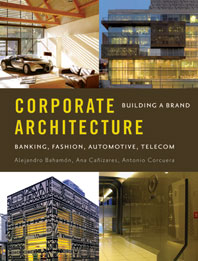Marvin J. Malecha, FAIA, describes the contemporary moment in architecture as one of uncertainty and potential, with previous dogmas delimiting how architecture is practiced no longer governing the profession. He also contends that the American Institute of Architects needs to become nimble enough as an organization to help its membership adapt to new realities of practice. Malecha hopes to shape it into a more adaptable organization when he assumes the AIA presidency next year. (Read an interview with George Miller, 2010 AIA president elect, here)

“I have been watching the architectural office evolve away from traditional organizations into learning organizations,” says Marvin Malecha.
Malecha did his BA in architecture at the University of Minnesota and his Master’s in architecture at Harvard. For more than 20 years he has worked as an educator, serving as dean of the College of Environmental Design at California State Polytechnic University in Pomona for 12 years before joining North Carolina State University as dean of the College of Design. But he has also kept one foot on the practice side of the fence, working on projects including the Center for Regenerative Studies in Pomona, an early example of green architecture developed in the early 1990s.
Years of experience in the academy have influenced both Malecha’s perspective on practice and his agenda for the AIA presidency. He recently spoke with RECORD about the point of view he will bring to his post as leader of the organization.
William Hanley: What will your highest priorities be when you become AIA president in 2009?
Marvin Malecha: For more than a decade now, I have been watching the architectural office evolve away from traditional organizations into learning organizations where architects are really involved with inventing new building types, new business models, and new ways of doing projects. For example, it has become more common for three or four architects to associate for a project, each representing a different piece of the job and having to work in collaboration. You can call it Integrated Project Delivery (IPD), but it's really a product of a general socialization of information going on in the culture at large. Our role at the AIA is to be agile enough to provide information to our membership about what this means in terms of new forms of contracts, new economies, and new ways of doing business. The AIA has to really think hard about how we help our members adjust to these new times through education, helping to facilitate research, and providing really hardcore information.
WH: Will your background in academics help you bring that agility to the organization?
MM: One of the things about the academy is that we are consensus driven. The people who come to these schools have diverse intellectual traditions and diverse cultural backgrounds. We have been struggling in the university for my entire time as a dean with questions like, “How do we nurture them? How do we encourage them to become design professionals?” And if you look at the younger membership in the AIA, if you look at its composition, it looks like a whole different organization than the traditional membership. On that one subject, I am probably better prepared as an academic than any practitioner because I've had to operate in a more consensus-driven, more inclusive process.
WH: How do you intend to foster more inclusive decision-making and collaboration both within the AIA and among its members?
MM: The real challenge in front of us is to structure the organization and offices around the concept of learning and getting schools involved in formal relationships with offices. Schools are going to have to get involved in the IPD experience and the culture of practice, and the AIA has to help foster greater responsibility for the teaching and mentoring of IPD in offices. We also need to have schools that intensely focus on the culture of practice in the way they focus on theory, and at the same time we need offices to understand that there are many subjects that we simply can't teach. We can't take students out onto a construction site and have them truly understand the implications of their work out there. Firms can do that. Firms have an incredible embedded learning culture within them and they need to expose that and share that and to understand how important that is, just as schools need to understand that firms are incredible resources to bring that culture of practice. That blurring of the line between office and school is one of the most important changes that the AIA can make happen.


